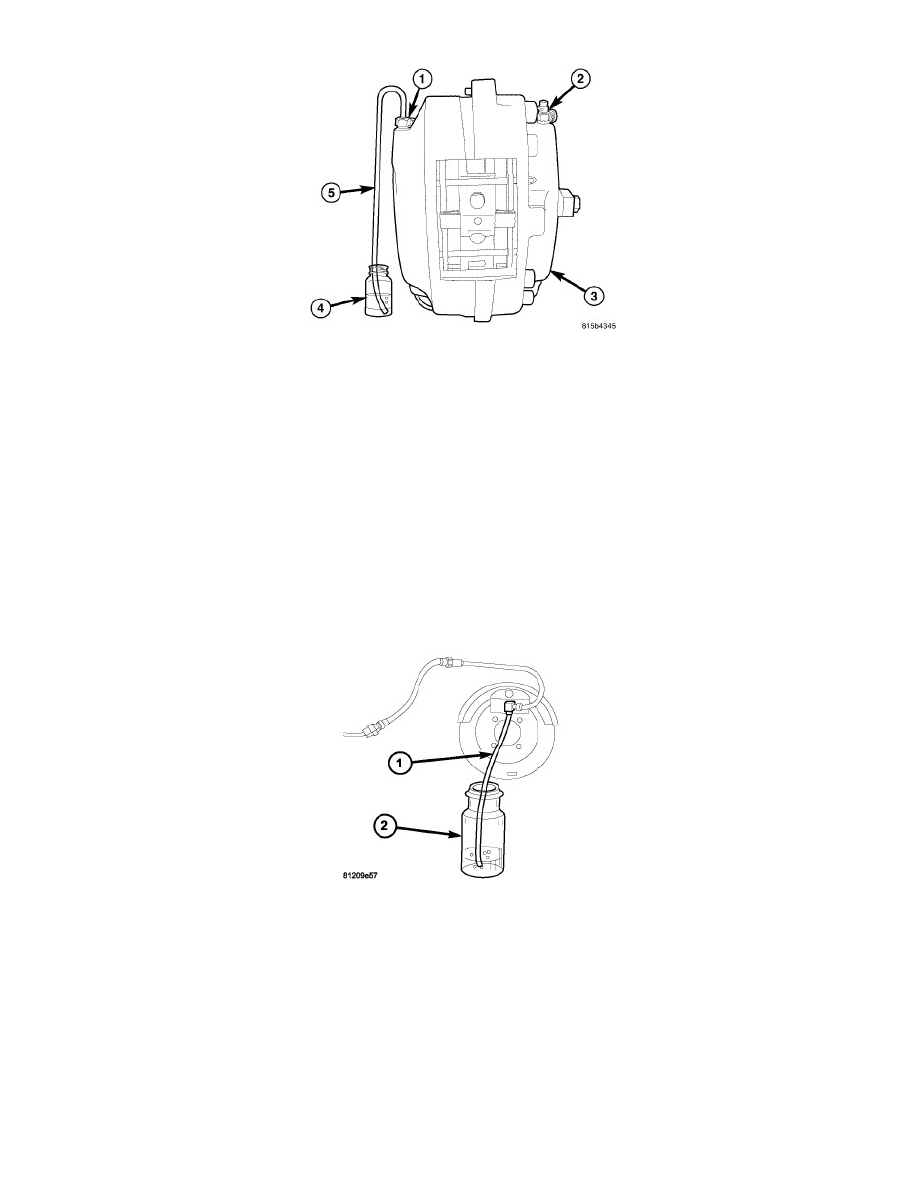Charger SRT-8 V8-6.1L (2009)

6. Attach a clear hose (5) to the outboard bleeder screw (1) at that same wheels brake caliper and feed the other end of hose into a clear jar (4)
containing enough fresh brake fluid to submerge the end of the hose.
CAUTION: Open the bleeder screw at least one full turn when instructed. Some air may be trapped in the brake lines or valves far upstream,
as far as ten feet or more from the bleeder screw. If the bleeder screw is not opened sufficiently, fluid flow is restricted causing a
slow, weak fluid discharge. This will NOT get all the air out. Therefore, it is essential to open the bleeder screw at least one full
turn to allow a fast, large volume discharge of brake fluid.
7. Open outboard bleeder screw (1) at least one full turn or more to obtain an adequate flow of brake fluid.
8. After 4 to 8 ounces of brake fluid has been bled through the brake hydraulic circuit, and an air-free flow (no bubbles) is maintained in the clear
plastic hose (5) and jar (4), close the bleeder screw (1).
9. Remove clear hose and install bleeder screw dust cap.
10. Bleed opposite rear brake wheel circuits as necessary in the same manner until all air is removed from the brake hydraulic system, then proceed to
the front brakes.
FRONT BRAKES
1. If installed, remove rubber dust cap from bleeder screw on each front brake caliper.
2. Starting at the first wheel circuit that needs to be bled (See list in above note), attach a clear hose (1) to the bleeder screw at that wheels brake
caliper and feed the other end of hose into a clear jar (2) containing enough fresh brake fluid to submerge the end of the hose.
CAUTION: Open the bleeder screw at least one full turn when instructed. Some air may be trapped in the brake lines or valves far upstream,
as far as ten feet or more from the bleeder screw. If the bleeder screw is not opened sufficiently, fluid flow is restricted causing a
slow, weak fluid discharge. This will NOT get all the air out. Therefore, it is essential to open the bleeder screw at least one full
turn to allow a fast, large volume discharge of brake fluid.
3. Open bleeder screw at least one full turn or more to obtain an adequate flow of brake fluid.
4. After 4 to 8 ounces of brake fluid has been bled through the brake hydraulic circuit, and an air-free flow (no bubbles) is maintained in the clear
plastic hose (1) and jar (2), close the bleeder screw.
5. Install bleeder screw dust cap.
6. Bleed opposite front brake wheel circuit as necessary in the same manner until all air is removed from the brake hydraulic system.
